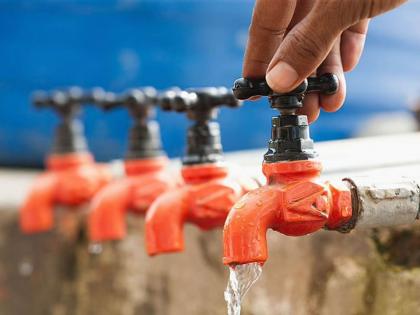Mumbai Water Quality: BMC ESR 2024–25 shows 0.46% unfit samples for second year
By Lokmat Times Desk | Updated: August 22, 2025 07:01 IST2025-08-22T06:58:42+5:302025-08-22T07:01:29+5:30
According to the latest Environment Status Report (ESR) for 2024–25, the Brihanmumbai Municipal Corporation (BMC) has managed to keep ...

Mumbai Water Quality: BMC ESR 2024–25 shows 0.46% unfit samples for second year
According to the latest Environment Status Report (ESR) for 2024–25, the Brihanmumbai Municipal Corporation (BMC) has managed to keep the ward-wise percentage of unfit water samples steady at 0.46% for the second consecutive year. This marks an improvement compared to 2022–23, when the rate stood at 0.99%. Among the wards, B Ward, which covers Dongri and Masjid Bunder, recorded the highest percentage of unsafe water at 3.2%, a sharp increase from 1.0% in the previous year. These figures highlight that while overall contamination levels have declined, some wards continue to struggle with water quality issues.
To maintain strict checks on drinking water quality, the civic body collects between 150 and 180 samples daily across Mumbai. During the monsoon season or emergency situations, the number can rise significantly, often reaching up to 250 samples per day. This process is carried out collaboratively by the Public Health Department (PHD) and the Hydraulic Engineering Department (HE), with samples drawn from both service reservoirs and distribution points across all 24 administrative wards. These efforts are aimed at ensuring that potable water reaching citizens consistently meets safety standards.
The monitoring system is supervised by multiple civic units including the Medical Officer of Health (MOH), the Assistant Engineer (Water Works – Quality Control), and the Leak Detection Department. Once samples are collected, they are dispatched to the Municipal Analyst Laboratory for bacteriological testing. The results are used to assess water safety, identify contamination sources, and check compliance with established quality norms. This multi-level testing system plays a key role in maintaining accountability, ensuring timely interventions, and preventing large-scale contamination risks in Mumbai’s complex water distribution network.
The ESR 2024–25 also points to slight improvements in several parts of the city. For example, the H/East Ward, which comprises Santacruz, Khar, and Bandra East, saw unfit water samples reduce marginally from 1.7% to 1.6%. Similarly, A Ward, which covers Colaba, Cuffe Parade, and Nariman Point, reported a notable decline from 2.1% last year to 1.5% this year. However, the progress was uneven across all areas, with T Ward (Mulund) experiencing a slight increase in contaminated water samples, rising from 0.7% to 1.0% in the same period.
Interestingly, a few wards reported zero contamination in their water quality assessments. These included C Ward, which comprises Kalbadevi, N Ward covering Ghatkopar and Vidyavihar, and P North Ward, which consists of Malvani, Madh, and Malad. Civic officials credited these results to improved monitoring systems, timely detection of pipeline issues, and swift repair drives. The data suggests that proactive measures not only bring down contamination levels but can also help maintain entire wards as “zero contamination zones,” ensuring safe and reliable drinking water supply.
Civic authorities stated that focused initiatives were conducted to identify and rectify sources of contamination in areas showing higher unfit sample percentages. These efforts contributed significantly to reducing unsafe drinking water levels in many parts of the city. Officials further noted that the lowest overall percentage of unfit water samples was recorded in 2021–22 at just 0.33%, marking the best performance in recent years. The findings emphasize the importance of consistent monitoring, timely interventions, and strong coordination between civic departments to ensure Mumbai’s water supply remains safe for residents.
Open in app